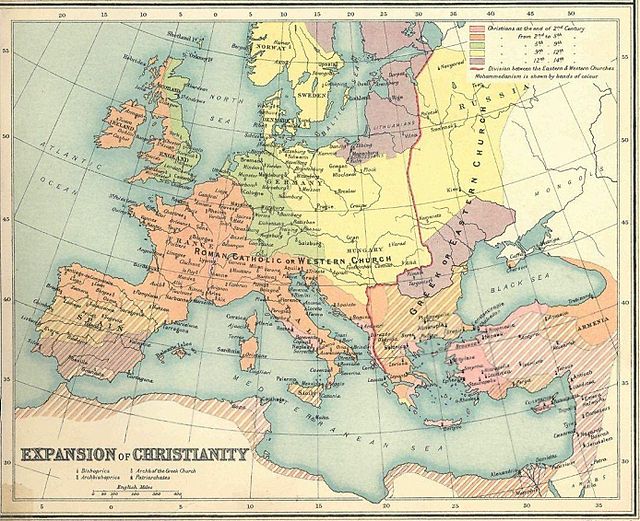Prehistoric Ukraine, as a part of the Pontic steppe in Eastern Europe, played an important role in Eurasian cultural events, including the spread of the Chalcolithic and Bronze Ages, Indo-European migrations, and the domestication of the horse.
Cucuteni-Trypillia pottery
A gold stater of Bosporan king Tiberius Julius Sauromates II, his bust depicted on the obverse with the Greek legend "BACΙΛΕΩC CΑΥΡΟΜΑΤΟΥ", and on the reverse the heads of Roman emperors Septimius Severus and Caracalla, dated 198 or 199 AD
The goddess Demeter in a Greek fresco from Panticapaeum in the Bosporan Kingdom, 1st century AD, Crimea
Overseas Guests by Nicholas Roerich, 1901
Eastern Europe is a subregion of the European continent. As a largely ambiguous term, it has a wide range of geopolitical, geographical, ethnic, cultural, and socio-economic connotations. Its eastern boundary is marked by the Ural Mountains, whilst its western boundary is defined in various ways. Most definitions include the countries of Belarus, Russia, Ukraine, Moldova and Romania while less restrictive definitions may also include some or all of the Balkans, the Baltic states, the Caucasus and the Visegrád group.
Expansion of Christianity





